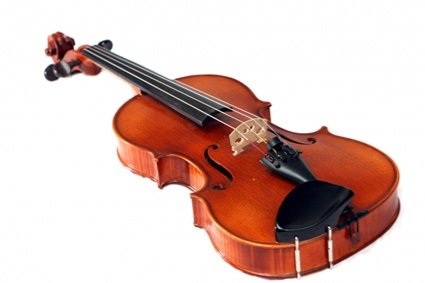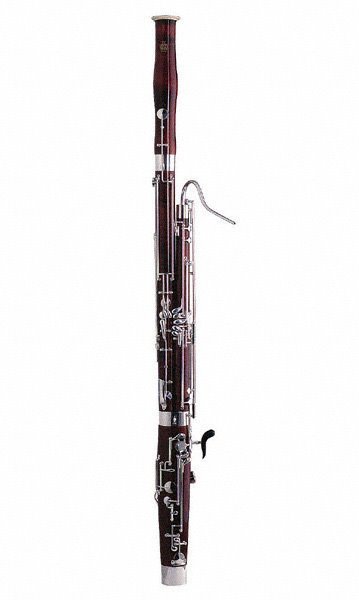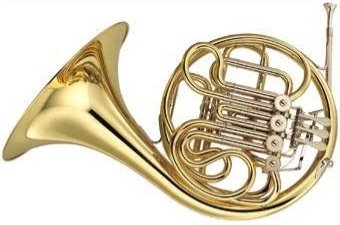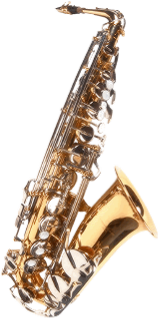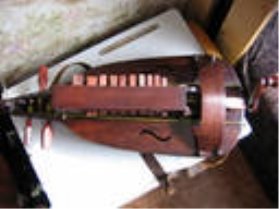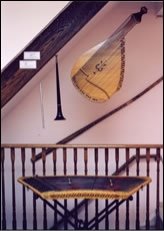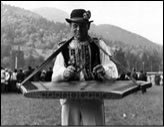Розробки уроків з англійської мови в 8 класі з теми: «Музика»
Пісні на уроках англійської мови сприяють естетичному вихованню учнів, об'єднанню колективу, більш повному розкриттю творчих здібностей кожного. Завдяки музиці на уроці утворюється сприятливий психологічний клімат, знижується психологічне навантаження, активізується мовна діяльність, зростає емоціональний тонус, підтримується інтерес до вивчення іноземної мови;
Пісні та інші музичні твори стимулюють монологічні та діалогічні висловлювання, служать основою розвитку мовленнєво-розумової діяльності школярів, сприяють розвитку як підготованого так і непідготованого мовлення.

англійської мови в 8 класі
з теми:
«Музика»
Вчитель: :Железковська О.Ю.
Олександрівська ЗШ І-ІІІ ст. №1
Урок-екскурсія
в 8 класі
на тему:

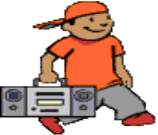

Topic: American Music - Jazz
Type of the Lesson: combined
Practical goals: to practice pupils’ skills in listening, speaking
Educational goals: to enlarge pupils’ knowledge about American music
Developing goals: to form pupils’ musical tastes
Upbringing goals: to bring up to understand musical culture of American music
Equipment: pictures, posters of famous American musicians and singers, different varicoloured balloons, tape recorder.
Lesson Structure
- Introduction to the lesson.
1. Greeting and Aim.
T. Today we are going to have a very unusual lesson. You can see some things and pictures which are connected with the topic of our lesson. (Pictures of musical instruments and singers). So the topic of our lesson is “American Music – Jazz”. As you know, music is everywhere in our lives. We hear it on the radio, on TV, in the streets, in shops and cafes, everywhere. Today we will learn about jazz. The aim of the lesson is to learn about the history of jazz, including a famous musician. On the way, we’ll learn new vocabulary and practice our listening skills.
2. Warming up.
T. We have learned about many types of music. Listen to the piece of music and guess its genre and match the definition.
|
Country music |
|
a style of popular music that has an exciting rhythm and is usually played by groups of musicians using drums, saxophones, trumpets, etc |
|
popular music in the style of white people’s folk music of the southern United States |
|
Jazz |
|
Blues |
||
|
a type of music which is like jazz, but is always slow and sounds sad
|
||
|
Rock-n-roll |
||
|
a kind of music with a strong beat that was sung and played by small groups of people |
||
- The Main Part of the Lesson
1. Presentation of New Material. Reading.
T. Jazz is a very popular style of music in the United States and all over the world. Now we will take turns reading about it and its history.
- Pre-Reading Activity
T. Match the words with their definitions. Find the corresponding pictures on the blackboard.
a) trumpet – 1) a musical instrument made of skin stretched over a circular frame, played by hitting it with your hand or a stick;
b) to improvise – 2) a musical instrument that you blow into, which consists of a curved metal tube that is wide at the end, and three buttons you press to change the notes;
c) ragtime – 3) to be a sign of something, to show or be a sign of a particular situation or feeling;
d) gospel – 4) a curved musical instrument of metal that you play by blowing into it and pressing buttons, used especially in popular music and jazz
e) to reflect – 5) a type of music and dancing that has a strong beat and was popular in the early part of the 20th century;
f) to determine - 6) a type of Christian music in which religious songs are sung very loudly;
g) drum – 7) to do something without any preparation, because you are forced to do this by unexpected events;
h) saxophone – 8) to decide something
- While-Reading Activity
Jazz is a style of popular music that has an exciting rhythm and strong beat. It is usually played by groups of musicians using drums, saxophones, trumpets and other wind instruments.
It is important to know that jazz is improvised music. It is not planned. The great jazz musicians are individual players and not really composers. Jazz grew out of Negro blues, ragtime, gospel, black spiritual songs, West African rhythms and European harmonies. Jazz originated among black people in New Orleans in about 1900. In the 1920s in New Orleans beautiful music filled the streets and cafes. The black and poor singers sang about their hard lives.
Then their music traveled to Europe. It was the time when the black music entered the whites’ culture changing the lifestyle of the people all over the world. Ever since the 1930s music was not just a way to relax. From that time on music began to reflect and determine the people’s way of life.
One of the most famous jazz musicians of all the times is Louis Armstrong. Louis Armstrong loved music from a very early age and liked to listen to street bands at parades. He began to play music at school and in 1924 he got his own band. He started traveling with it. Later he organized several large bands. He introduced new ideas to jazz and was known as the “King of Jazz.”
- Post-Reading Activity.
1). Comprehension Questions.
1. What style or kind of music is jazz?
2. What is important about jazz?
3. What instruments do jazz musicians play?
4. Where did jazz originate?
5. Who is the “King of Jazz”? Why?
2). Pair Work.
T. Now make up a dialogue using the text.
2. Listening
- Pre-Listening Activity.Writing.
T. Now that we know more about jazz, we will listen to a song by
Louis Armstrong. Before we listen, let’s take turns reading the words.
As you see there are some words missing. Can you complete any of the following lines? As you listen to it, try to write the words that you hear.
What a Wonderful World
I see … of green,
Red … too.
I see them … for me and you,
And I think to myself
What a wonderful world.
I see … of blue,
And … of white, the bright… day
And I think to myself
What a wonderful world.
The … of the rainbow
So pretty in the sky
Are also on the …
Of the people going by.
I see friends shaking … .
Saying, “How do you do?
They’re really saying
“I … you”.
I hear … cry,
I watch them grow.
They’ll … much more
Than you’ll ever know,
And I think to myself
What a wonderful world.
Yes, I think to myself
What a wonderful world.
Keys: trees, roses, bloom, skies, clouds, sunny, starry, colours, faces, hands, love, babies, learn.
b) While –Listening Activity.
T. What is this song about?
I will play the song one-more time. Listen to the rhythm and words.
- Post-Listening Activity. Speaking.
T. Now let’s share what we heard. How do you think what the singer feels? (Possible answers: to feel aloneness, because the song is sad; to remind the sea and waves, etc.)
3. Questionnaire.
T. Now you will stand up, take an interview using the questionnaire and find how musical you are in the form?
How Musical are you?
- Which instruments do you play…
- very well? (3 for each) ___________________________
- quite well? (2 for each)______________________________
- a little? (1 for each)_________________________________
- not at all? (0) __________________________________
- Is music important to you?
- Yes. (5)
- Sometimes. (3)
- It depends on the kinds of music. (2)
- No. (0)
- How often do you sit down and listen to music?
- Every day. (4)
- Most days. (3)
- Some days. (2)
- Never. (0)
- How many concerts did you go to last year?
- More than 5. (4).
- 2-5. (3)
- 1. (1)
- None. (0)
- How many CDs and / or cassettes have you got?
- So many you can’t count. (4)
- 20-40. (3)
- About 10. (2).
- None. (0)
- Where and when do you listen to music? (1point for each.)
- In the sitting room.
- In your room.
- In bed.
- In transport.
- While you’re working.
- While you’re studying.
- When you’re doing sport.
- Your variant ____________________________________
Add up your score.
25-30: You’re music mad! Take your earphones off and listen to your teacher!
20-25: You like music but you know there are other things in life.
10-20: You like other things more than music.
0-10: It’s OK. Music is for birds.
III. Conclusion of the Lesson.
1. Homework.
T. Make up your projects about other kinds or styles of American Music.
2. Daily Marks.
3. Summarising.
T. I think you liked our lesson. But what was the most difficult for you? What was the easiest?
Нестандартний урок
в 8 класі на тему:
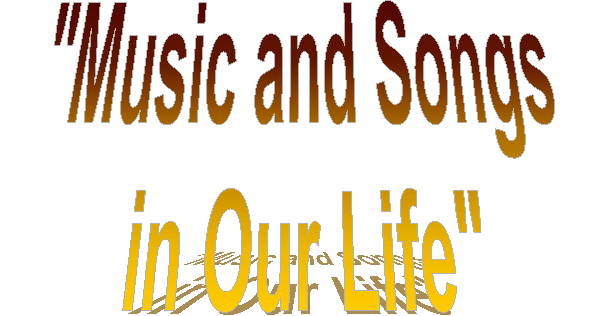
Topic: Music and Songs in Our Life
Objectives:
Practical: (skills-forming): to teach students listening comprehension, speaking on the topic, answering questions on the content of the song and the text, writing poems (creative work), writing “Star Report”.
Educational: to enrich students’ topical conversational vocabulary; encourage students to learn English-speaking culture.
Developing: to improve students’ listening, reading, speaking skills; to enhance their cognitive abilities and memory; pairs and group co-operation.
Moral values: to cultivate the aesthetic taste, awareness and respect to the world culture.
Equipment: a blackboard, handouts, “Personality Quiz” sample, sample cards “Star Report”, singer’s photo.
PROCEDURE
I. LEAD-IN
(The theme of the lesson is on the board.)
T: Good morning! We are going to talk about music, its impact on you, your preferences in music.
II. WARMING-UP
T: Let us see if you are keen on music. Take an interview using these questions and find your partner with the same musical tastes. (Class Survey)
(Teacher gives handouts with questions to students.)
ANSWER THE QUESTIONS AND FIND YOUR PARTNER.
- Which instruments do you play?…
- Is music important to you?
- How often do you sit down and listen to music?
- How many concerts did you go to last year?
- How many CDs and / or cassettes have you got?
- Where and when do you listen to music?
III. SPEAKING
T: So, you like music, don’t you? Let us see what associations we have with the word music.
(Teacher writes a music network on the board asking students about their associations. Teacher explains the pronunciation, spelling, definitions of the words in italics: the names of musical instruments, genres and styles of music etc.)
IV. DISCUSSION
T: Let’s have a talk about music.
1. What kind of music do you like (dislike)?
2. Who or what do you think influence(d) your music tastes?
3. Did you learn music at school? Can you play any musical instrument? If yes, which one? Do you enjoy doing it? If not, what instrument would you like to learn to play?
4. Do you have favourite musical instruments? Which ones?
5. Imagine that you’ve just come home tired from a day at school. What music would you like to listen to, if any, and why?
7. Can you say that you choose music according to your mood and the job that you are doing? If yes, what kind of music do you most like to listen to when you are:
a) with your friends? c) dancing? e) doing your homework?
b) relaxing alone? d) in a bad mood? f) working about the house?
8.If you could take only three albums with you to a desert island, which three would you take?
9. What is your favourite singer (musician, composer)?
10.What is your favourite group?
11.Do you read pop music magazines? Which one?
12.Do you like to sing karaoke? Why?
13.Do you take dance lessons? What kind?
14.What is your favourite rock star? If you met him/her, what would you say or do?
V. LISTENING
Pre-listening activity
T: We shall listen to the famous pop song “Desert Rose” by Sting. Have you heard this song before? What is the main idea of the song?
(Students prepared some information beforehand).
Gordon summer was born on 2 October 1951, Newcastle, England. He started his music career as a bass player and lead singer in “the Police”. Sting’s solo career began in 1982. his popularity and fame grew rapidly and steadily. Since 1994 Sting has been considered to be one of the finest quality songwriters to appear out of the second UK “new wave” boom (post-1977).
Sting spent а traumatic time during the summer of 1995 when he had to testify in count after accusing his accountant of stealing vast sums of his income. The outcome was in the singer's favour and the accountant was jailed for six years. The title track of his new album, Brand New Day, proved he was still capable of achieving hit singles. This album has enjoyed a long residency on the charts.
Vocabulary: Match the words from the song (on the left) to the word combinations that have the similar meaning (on the right):
1. to tire A. Paradise
2. to be tied B. to get tired
3. to torture C. to come to one's mind repeatedly
4. to haunt D. to look steadily
5. to gaze E. to make somebody suffer
6. intoxication F. to be connected with something or somebody
7. flames G. the glowing part of the fire
8. veil H. a state of being drunk or poisoned
9. rate I. the reasonable arrangement of elements
10. logic J. a cloth worn by oriental women to hide their faces
11. Eden K. not common, unusual
Lead-in: Think of the DESERT. What associations do you have with this word?
Imagine that you have been walking in a desert for a very long period of time. What would you dream about? Share your ideas with the group.
Grammar: You will read a narrative of what one man dreamt of when he was walking through a desert. Change it from the Past narrative into the Present and you'll get the song of Sting. (Note that the Narrative is written on behalf of the 3rd person singular, while the real song is on the behalf of the 1st person singular. Pay attention to the pronoun and adverb concord). In some lines you will make NO changes at all.
Song:
![]() Past narrative Present speech
Past narrative Present speech
Verse 1:
He dreamt of rain, ________________________________________
He dreamt of gardens ________________________________________
in the desert sand. ________________________________________
He woke in pain, ________________________________________
He dreamt of love ________________________________________
as time ran through his hand. ________________________________________
Verse 2:
He dreamt of fire ______________________________________
Those dreams were tied _______________________________________
to a horse that would never tire. _______________________________________
And in the flames _______________________________________
her shadows played ________________________________________
in the shape of a man's desire. ________________________________________
Verse 3:
That desert rose, ________________________________________
each of her veil _______________________________________
was a secret promise. ________________________________________
That desert flower, ________________________________________
no sweet perfume had ever ________________________________________
tortured him more than that. ________________________________________
Verse 4:
And as she turned _______________________________________
that way she moved _______________________________________
in the logic of all his dreams. ________________________________________
That fire burnt, ________________________________________
he realized that nothing was ________________________________________
as it seemed. ________________________________________
Verse 1.
Verse 5:
He dreamt of rain, ________________________________________
he lifted his gaze _______________________________________
to empty skies above. ________________________________________
He closed his eyes, ________________________________________
that rare perfume ________________________________________
was the sweet intoxication of her love ___________________________________
Verse 1,3.
Verse 6:
Sweet desert rose, ____________________________________
that memory of Eden ____________________________________
haunted them all. ____________________________________
That desert flower, _____________________________________
that rare perfume _____________________________________
was the sweet intoxication of the fall.____________________________________
Follow-up:
Task 1: Choose the best variant for the topic of the song:
- environment protection
- gardening
- traveling
- love
- nature
- fire and rain
Task 2: What might the song be written for? What feelings does it express?
Task 3: The song is very symbolic. What could the images of the song mean?
-Desert - ?
-Rose - ?
-Rain - ?
-Fire - ?
Task 4: Explain the title of the song.
Task 5: If we could divide all people into two types (a Fire and a Rain type) according to their temperament or character, what qualities would describe each type?
FIRE PERSON: RAIN PERSON:
________________________ ___________________________
________________________ ____________________________
________________________ ___________________________
________________________ __________________________
(bright, active, optimistic, (calm, thoughtful, creative, cold, pessimistic,
eccentric, energetic, enthusiastic, passive, melancholic, etc.)
warm, changeable, etc.)
What type of character (Fire or Rain) would you choose for yourself? (Do you have more of fire or of rain?) Explain your choice.
VI. Reading
1)Pre-reading Activity Problem Solving (before reading ex.26,p.69)
T: What do you think?
Brian Jones, a guitarist with the Rolling Stones, drowned in his swimming pool in July 1969.
Janis Joplin died from a drug overdose on October 1970.
John Lennon was shot in New York in December 1980.
Is the price of Rock`n roll too high?
Can the popularity destroy the personal life of a singer? Why?
2) While-Reading Activities.
T: Read the text and say if the sentences are true or false.
John Lennon was murdered on December*, 1980 in New York.
He was short three times.
Lennon was rushed to the hospital, but it was too late.
The killer was 25 year-old Mark Chapman from New York.
Chapman believed that he was John Lennon.
3) Post-Reading Activities.
T: Answer the questions of ex.26, p. 69.
III. CONCLUSION
- SUMMING-UP
T: In our today's lesson we have revised and learnt the words and word combinations on the topic “Music in our Life”, discussed various preferences, got some new information about pop singer Sting. And I believe that all of you enjoyed listening to and singing the song “Desert Rose”. I suppose you've realized that music plays a great role in our life and makes it more colorful and efficient.
- HOMEWORK
T: Your homework is to write the: “Star Reports” and make up the presentations of your own. They can include playing music, songs, talking about the star or acting out a mock interview.
Нестандартний урок
В 8 класі на тему:


Topic: Can we Understand English Songs?
Type of the lesson: combined
Practical goals: to activise the students’ skills in listening, to activise grammar tenses: The Present Simple, the Present Continuous Tense, the perfect tense in oral speech; to teach new words.
Educational goals: to show the differences of tenses in an English song.
Developmental goals: to develop logical thinking and students’ imagination.
Upbringing goals: to create the interesting atmosphere at the lesson, responsibility and partner work.
Materials and equipments: a tape-recorder, cards with the song words, a blackboard.
The plan of the lesson:
- Introduction to the lesson. -7 min.
- Greeting.
- Aim of the lesson.
- Warming up.
- The main part of the lesson.
- Listening practice:
a). Pre-Listening activity – 3 min.
- grammar Tenses;
- learning new words – 5 min;
- answering the questions – 7 min;
b) While-Listening – 5 min.
c) Post-Listening activity – 13 min:
III. The conclusion of the lesson.
- Marks.
- Summarizing.
Procedure
- Introduction to the lesson. (Позитивна установка на роботу; створення емоційно-позитивного настрою).
1. Greeting.
T: Good morning, children. How do you do today? (Ps: It’s fine. So-so. I’m tired. Awful! Etc.)
What wonderful and surprising things have you seen on your way to school? What pleasant words have you heard or said to your nearest and dearest?
![]()
![]()
![]() The Conversation: T P1, P2, P3
The Conversation: T P1, P2, P3
2. The Aim of the Lesson.
T: Students, before speaking on the topic of our lesson answer my questions.
- Do you like to listen to music?
- What kind of music do you like (dislike)?
Words on the blackboard: loud, aggressive, sad, romantic, depressing, rhythmical, folk, classical, pop music?
- What music do you like to listen about? (animals, people, nature, love)
- What music programmes do you like to watch on TV?
- What music do you like to listen? (Russian, Ukrainian, English…)
So, many people like music but “lovers of music” love it and try to fill every minute of their life with music. When you listen to English songs can you understand them and translate them? So, the topic of the lesson is: Can we Understand English Songs? We’ll try to answer this question at the end of our lesson.
II. The main part of the lesson.
- Listening practice:
T: Today we’ll listen to one English song.
- Grammar Tenses – Pre-Listening Activity.
T: First we’ll remember about grammar because many English tenses will be in the song. Answer my questions:
- What can you say about the Present Simple? (It expresses a recurrent or permanent action in the present).
- What does it mean the Present Continuous Tense? (it is used to express an action going on at the present moment, at the time of speaking).
- Where is the Present Perfect Tense used? (It is used to express an action which took place before the present moment when the speaker’s aim is to emphasize the present result of this action).
Give your examples.
P1, P2, … 1. He goes to school every day.
They live in Kirovograd.
2. She is speaking now.
I am watching TV at this moment.
3. They have brought their tape-recorder already.
He has already read the book.
- Learning new words.
T: Before listening to the song let’s learn new words.
the diner – a restaurant in the shape of a railroad;
the counter – a table at restaurant over which food is served;
to argue – to express strong disagreement;
to pour – to make liquid flow in a stream;
to shake – if something shakes, it makes very small quick movements from side to side or up and down;
to kiss hellos – to greet somebody the way the French do;
to pretend – to make false appearance of doing something;
funnies – cartoons, jokes;
reflection – production of an image by a mirror or a window;
to hitch up – to pull up with a quick movement;
to straighten – to get rid of wrinkles on clothes;
T: a) Make up your own sentences with these words.
- Speaking.
T: Answer the questions looking at the picture.
- Where do you think the woman is at the moment?
- What is she doing?
- What in you opinion does she see?
- What kind of mood do you think she is in?
- What might she be thinking about?
- What kind of song might she be singing? (Choose the one(s) that you find the best:
|
Cheerful Aggressive Protest Romantic Children’s Lyrical Happy Depressive Patriotic Melancholic Optimistic Sad
|
-
 While-Listening Activity.
While-Listening Activity.
T: Listen to the song and correct mistakes. Some auxiliary verbs were missed or put by mistake. Each line has two mistakes of this kind. Find and correct them. The first line has been corrected as an example.
I am sitting in the morning at the diner is on the corner.
I waiting at the counter for the man is to pour the coffee.
And he is fills it only halfway, and before I am even argue
He looking out the window at somebody is coming in.
"It always nice to see you", says the man is behind the counter
To the woman who come in. She shaking her umbrella.
And I am look the other way as they kissing their hellos,
And I pretending not to see them and instead I am pour the milk.
And I am open up the paper. There a story of an actor,
Who had died while he drinking. It no one I had heard of.
And I turning to the horoscope, is looking for the funnies,
But I feeling someone watching me, and so I am raise my head.
In Verses 4 and 5 each line will have only one mistake for you to correct.
There a woman on the outside,
Looking inside. She see me?
No, she not really see me,
'Cause she does sees her own reflection.
And I trying not to notice,
That she hitching up her skirt,
And while she straightening her stockings,
Her hair gotten wet.
Oh this rain, it continue
Through the morning as I listening
Is to the bells of the cathedral
I thinking of your voice...
T: Look at the text of the song and answer the questions:
- What tense is the most frequently used in the song? Why this tense? (the Present Continuous tense is used to describe the events going on at the moment of singing. Besides, the Present Simple tense is used to name the contemporary events (single actions: e.g. I open up the paper, I raise my head, etc.) and with those verbs that can’t be used in the Continuous (e.g. She does not really see me).
- That is the song about? (about nothing. About the things that are going around the singer, who is sitting in a restaurant).
- Come back to the lead-in task. Remember the answers you gave to the questions in this task. Were your predictions right? Now when you know the song, answer them again. (Possible answers:
- in a restaurant or a café;
- she is sitting and drinking coffee/tea, looking outside;
- the street, a cathedral, people rushing somewhere, rain;
- melancholic, sad, aloof;
- her life, her problems/people outside/ love, friendship …
- romantic, lyrical, depressive, melancholic, sad.)
-
The Conclusion of the Lesson.
- Putting Marks.
- Summarizing.
T: a) Can we answer the topic’s question?
b) Can you understand English songs?
c) What must we do to understand better English songs?
d) What have we done at our lesson?
e) What did you like at our lesson?
3. Homework.
- Write a poem using Present Continuous or Present Simple about music.
- Make up a dialogue on the topic “Music in My Life”.
Урок
(узагальнюючий по темі
«Музика»)
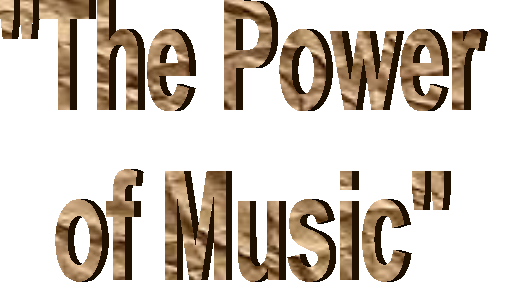
Topic: The Power of Music
Type of the Lesson: combined (The final lesson on the topic “Music”)
Practical goals: to generalize pupils’ skills in reading, listening, speaking on the topic “Music”
Educational goals: to enrich students’ topical conversational vocabulary; encourage students to learn English-speaking culture.
Developing goals: to develop pupils’ skills in speaking using questions; to develop pupils’ skills to be creative using projects
Upbringing goals: to cultivate the aesthetic taste, awareness and respect to the world culture.
Equipment: a computer, photos of musical instruments, handouts
Lesson Structure
- Introduction to the lesson.
- Greeting and Aim
T. (The theme of the lesson is on the board.)
T: Good morning! I hope you are fine and you will be energetic and active in the lesson for we are going to exchange opinions on the role of music and the power of music in our life. It goes without saying that music is really important in our life. It reflects people’s ideas and emotions, feelings, it inspires and comforts us.
2. WARMING-UP
a) T. How does it influence people? Write as many words as possible to complete the mind-map.
|
Music
|
|
cures
|
|
entertains |
|
ennobles |
|
brings up |
|
treats |
|
enriches |
|
teaches |
b) T. Look at the pictures of a musical instruments and say what they are. What instruments are Ukrainians?
II. The Main Part of the Lesson
1. Presentation of New Material. Reading.
a) Before-Reading Activity
T. Before you read the text look at the following statements and decide whether you agree or disagree with them.
1. There are few places where you can avoid hearing music.
2. Our taste in music is personal.
3. Music can affect us physically.
4. The only music which affects us positively is that which we like.
5. Music can be used to cure people in hospitals.
6. Certain types of music can be harmful.
b) While-Reading Activity
The Power of Music
Nowadays it is almost impossible to escape from music, even if we want to. It thunders out of every shop, hisses horribly through other people’s stereos on public transport, lulls you in restaurants, and blasts out of car windows.
But although we all can have music everywhere we go, very few of us have any real idea of the effect music has on human system. For many years it has been thought that musical tastes are subjective – that one person will like jazz while another prefers classical music.
Some music will help us feel relaxed and peaceful, whereas other types may be stimulating to the brain, encouraging creativity and curiosity. Some music promotes loving feelings while other sounds call for violence.
As a result music is being used in hospitals and doctors have found that 20 minutes of soothing music is often far more effective than tranquilizers or sleeping pills.
Psychologists believe that all music can be divided into three types, and each of them has different effect on the body and mind. The first is low-energy music, the sort that makes you feel bad. Most rock music falls into this category. In fact it has been discovered that rock music makes people feel hate instead of love.
The next category is high-energy music. This makes you feel better and it can help to normalize the heart rate. J.S.Bach’s music has exceptionally high energy.
The third category is prayerful music. This is the most healing of all. Much of the classical music written before 1600 falls into this category.
Scientific work on the healing power of music started with plant research in 1970s. Many types of classical music speeded plant growth.
Music can also help us in our daily life. For example, you can prepare yourself for important occasions such as an exam or a job interview by humming an appropriate tune. It can also act as a pain reliever when you go to the dentist, or it can simply give expression to your mood. Listening to music gives your brain a break and helps you get through the day.
c) Post-Reading Activity
T. Read the statements given before the text again and decide whether your opinion has changed.
2. Project Work.
Now, pupils we’ll see and listen to your projects which you have prepared at home. (Pupils show their projects using computer, booklets)
III. The Conclusion of the Lesson.
T. Thank you for your job. We’ve learnt a lot about music at our lessons.
- Homework.
T. Make a project “My Favourite Ukrainian Pop Singers”
- Summarizing.
T. What have you done at today’s lesson? What was the most interesting for you? What was the most difficult? What was the easiest?
- Marks.
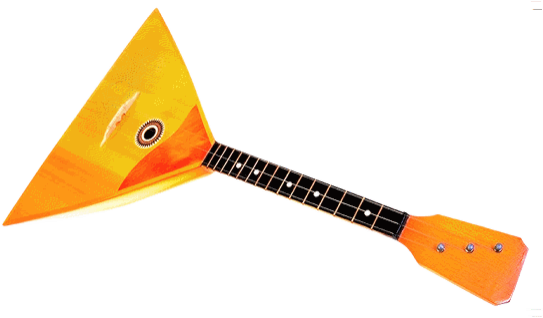
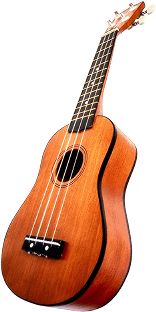
Acoustic Bass Guitar
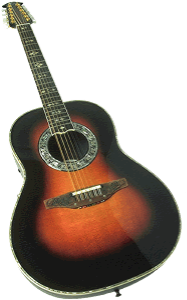
String Classical Guitar
Picture of a viola, showing off its beautiful antique sheen
This bassoon is made of maple wood and has silver plated keys.
The bassoon belongs to the woodwind family of musical instruments. It is a large double reed instrument with a lower sound than the other woodwind instruments.
French horn
Alto Saxophone
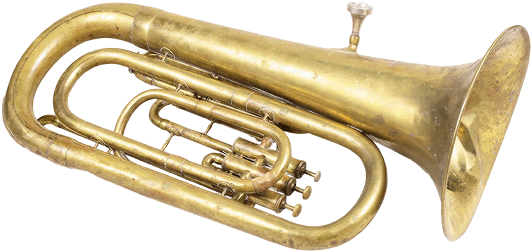
the tuba
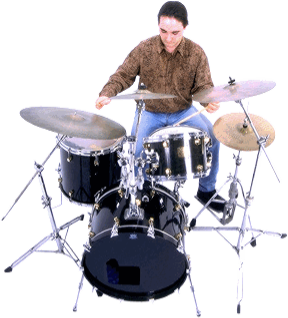
Drummer with drum set
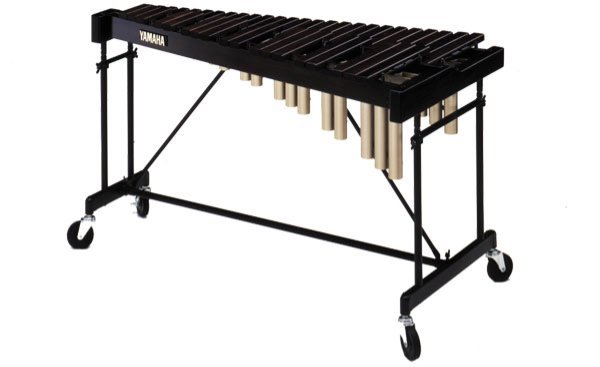
A xylophone from a symphony orchestra. A xylophone is a set of tuned wooden bars, which are played by being beaten with sticks. The bars normally rest in a frame and are arranged in the order of their pitch.
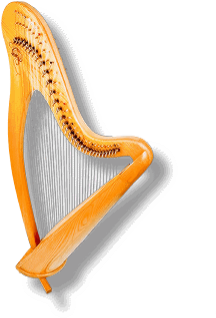
A folk harp. Harps date back to ancient Egypt and Sumeria.
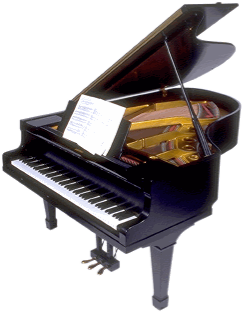
Concert Grand Piano
A Drum. 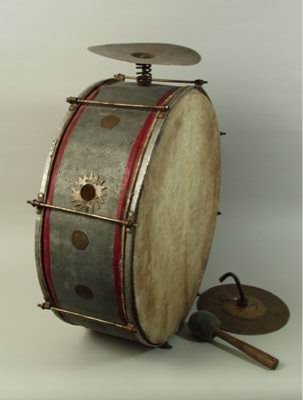
A bandurka. I.D.Nazina "Byelorussian folk instruments". Minsk, 1982.
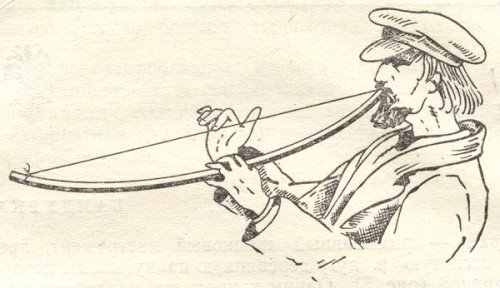
18. An ancient Polissya violin. 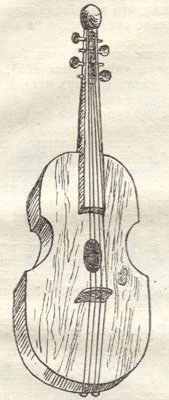
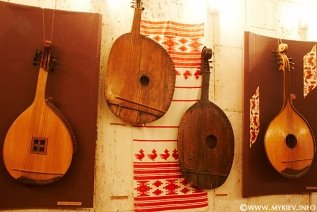
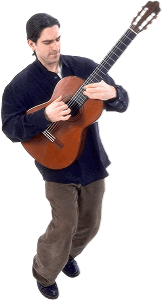
Classical Guitarist
(could also be playing Latin or flamenco music)
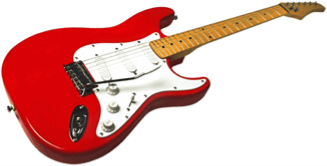
Electric Guitar
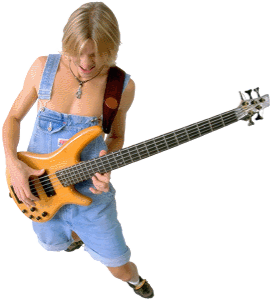
Man Playing 5 String Bass Guitar
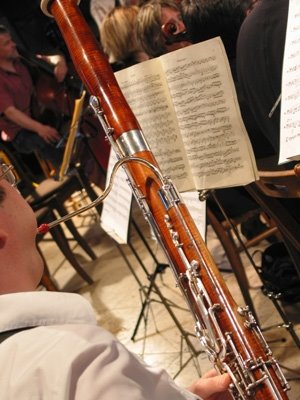
Bassoon player performing in an orchestra

Girl playing saxophone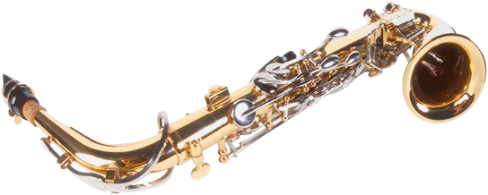
Curved Bell Soprano Saxophone
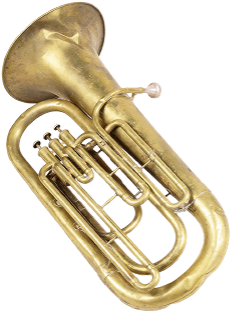
A tuba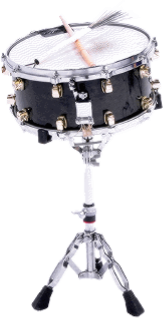
Snare drum with drum sticks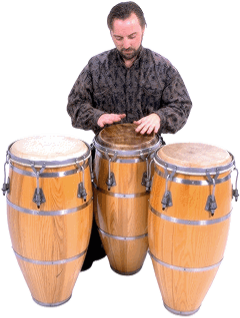
Conga drummer with conga drums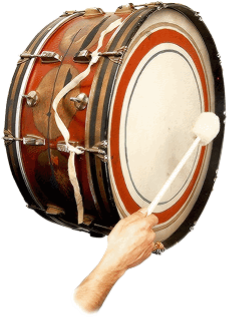
Large bass drum used in marching bands
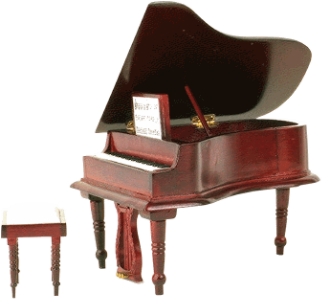
Grand Piano with Stool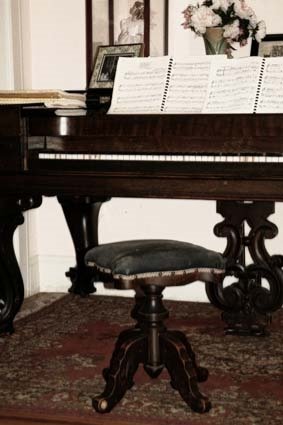
Antique Piano
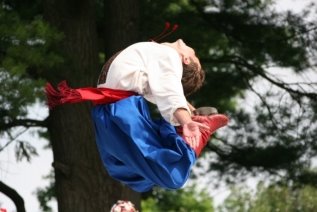
derkach. Artificer I.Sydorchuk (born in 1953), town of Kovel in Volyn oblast. (Funds of the National Musical Academy of Ukraine).

2. A fife -"vykrutka". Rivne land. Materials by I.V.Klymenko. (Funds of the National Musical Academy of Ukraine).
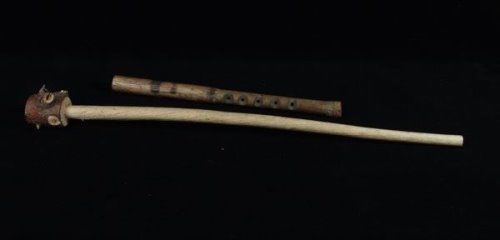
3. A fife - "kolyanka". Rivne land. Materials by I.V.Klymenko. (Funds of the National Musical Academy of Ukraine).
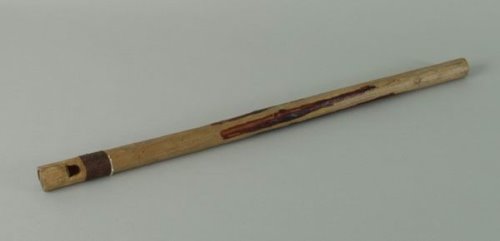
4. A metal bell. Village of Skulyn in Kovelsky district of Volyn oblast. (Funds of the National Musical Academy of Ukraine).
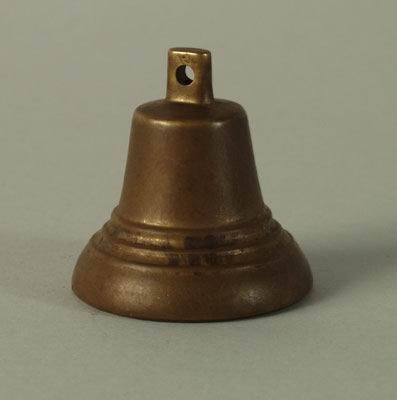
5. A fife - "kolyanka". Rivne land. Materials by I.V.Klymenko. (Funds of the National Musical Academy of Ukraine).
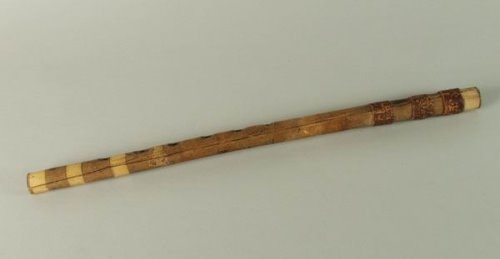
6. A shepherd's horn made of cow horn. Artificer Adamenko B.S. (born in 1924). Village of Fedorivka in Polisky district of Kyiv oblast.
7

10. "Grayka na peryni"
|
The trembita,woodwind instrument, is the Ukrainian version of the alpine horn. It is usually made of spruce that has been split, a central bore dug out and then glued together and bound with birch bark. It is usually some three meters (10 feet) long, being 2.3 to 5 cm (1-2 in.) wide at the mouthpiece and 6cm (3 1/2 in) wide at the bell. Shorter trembitas of half to one meter in length can be found. This shorter instruments are often called "vivcharska dudka" (shepherds pipe) or "syhnal'na truba." The mouthpiece is often made from a separate piece. The range is approximately three octaves, encompassing the natural harmonic series such as in the french horn. The trembita was primarily used in signaling events such as the coming of visitors, enemies or death in the mountain regions of Ukraine and thus a system of elaborate signals was devised. Carol motifs were also played on the instrument at Christmas. Like many of the instruments of Western Ukraine, the trembita is not unique to the Ukrainian people. Instruments such as the trombita, trabita, trebita can be found in Poland and the bucium in Romania. |
|
1


про публікацію авторської розробки
Додати розробку

